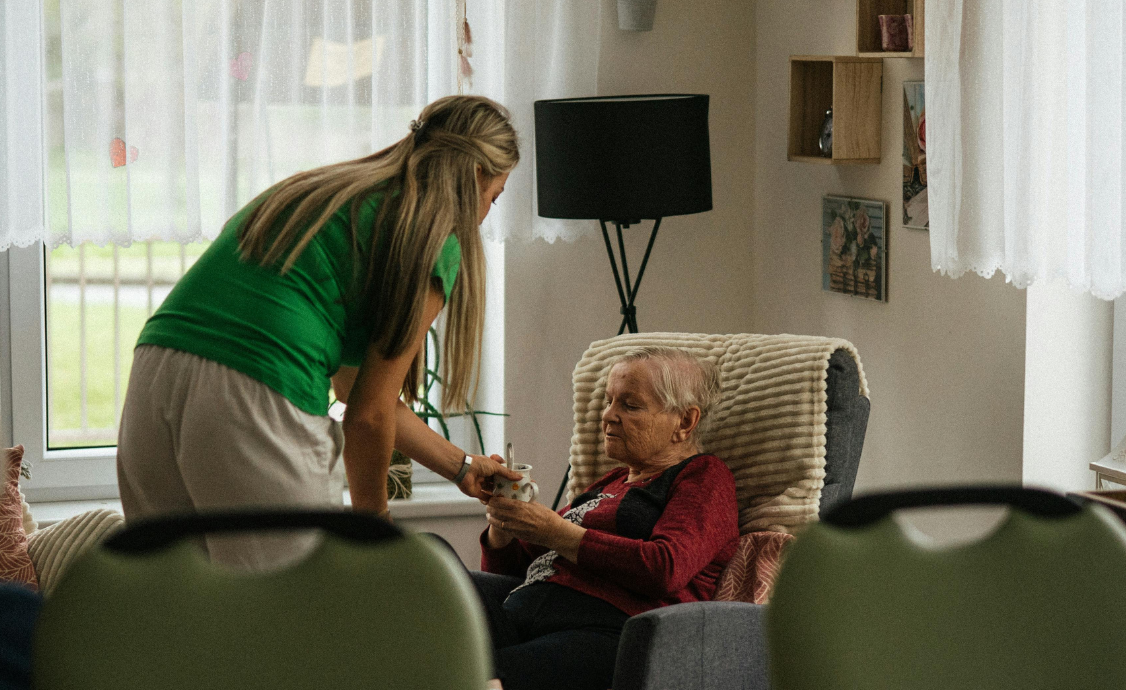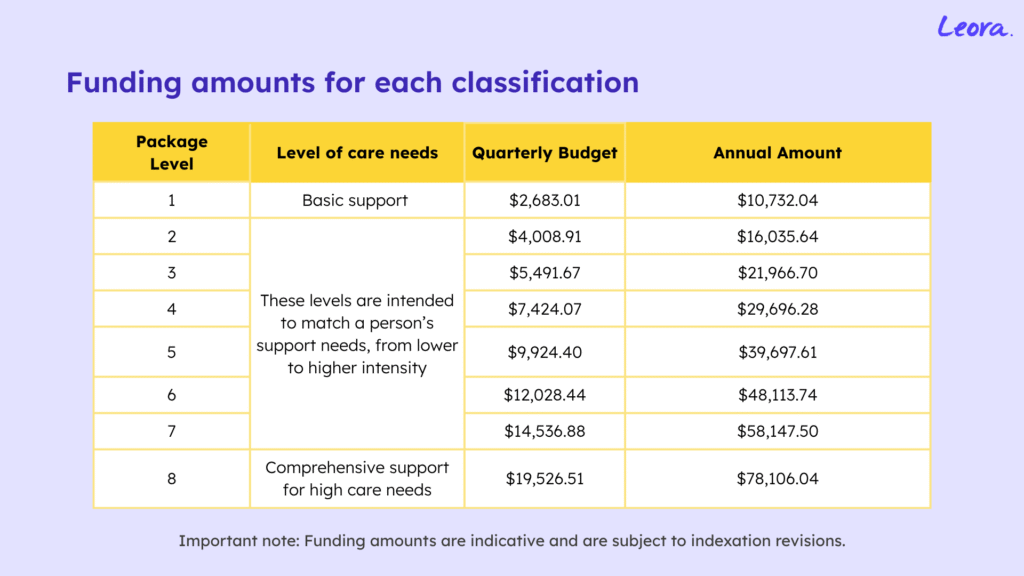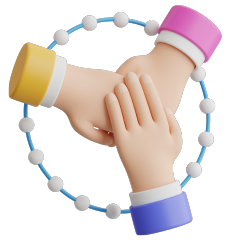Support at home: Aged care at home is changing in November 2025

The Support at Home program is Australia’s new aged care model set to launch in November 2025. Designed to simplify and strengthen in-home support, Support at Home will replace Home Care Packages and other programs, offering older Australians more flexible, coordinated services tailored to their needs.
Table of Contents
From 1 November 2025, aged care at home in Australia will look a little different. A new system called Support at Home will replace the current Home Care Package (HCP) and Short-Term Restorative Care programs.
Originally set to commence on 1 July 2025, this deferral will allow aged care providers to better prepare clients, support workers, and ensure their systems are ready for the changes.
It will mean providers and workers will have more time to talk to older people about how aged care is changing to make sure:
- the rights of older people are protected
- decision-making support is their choice
- care assessment is easier
- aged care service information is transparent
- what older people should expect from providers and workers is clear.
The postponement will also ensure older people accessing home care have the time to understand the Support at Home changes, including:
- service agreements and care plans
- service list, prices and contributions to non-clinical services.
The goal is to make in-home care more consistent, flexible and focused on enabling older Australians to live safely and independently in their own homes.
Whether you already receive support or are planning ahead for yourself or a loved one, here’s what to expect.
Why aged care is changing
Right now, the country’s aged care system is split across several programs, each with different rules, budgets and services. This can be a bit confusing for many, especially when needs change.
Support at Home is part of the federal government’s response to the Royal Commission into Aged Care Quality and Safety, which called for simpler, fairer care that centres on dignity, safety and individual choice.
This new program will bring together the Home Care Package and Short-Term Restorative Care into a single, more streamlined service for older Australians who want to stay living at home. The Commonwealth Home Support Programme (CHSP), however, will remain in place until at least 1 November 2027.
As part of this transition, the government has pledged to make supports available sooner. In early September 2025, it announced that 40,000 additional Home Care Packages will be fast-tracked before the end of the year, to be rolled out in two stages: 20,000 by 31 October and another 20,000 between 1 November and 31 December. An additional 43,000 packages are set for the first half of 2026, bringing the total boost to 83,000.
Together, these new Home Care Packages are designed to cut down the long wait times so more older Australians can get the support they’ve already been approved for, without the delay.
What Support at Home will offer
Support at Home brings together a wide range of services that support day-to-day living, health and social connection. This includes services like nursing, personal care, meal preparation, transport, help around the home and access to mobility aids or equipment.
The Support at Home program will have eight (8) ongoing classifications and three (3) short-term classifications.
For both ongoing and short-term classifications, funded aged care services will be grouped into three categories:
- Clinical Supports – such as nursing care, occupational therapy and physiotherapy
- Independence – such as personal care, social support, respite care, community engagement and transport
- Everyday Living – such as domestic assistance, home maintenance & repairs and meals
Instead of applying through multiple channels, older people will be assessed once and then matched with a single provider who coordinates all of their care.
How the new system will work
Each person entering Support at Home will receive a comprehensive assessment through My Aged Care. Every person approved for Support at Home will be assigned a classification based on their assessed support needs.
These levels are intended to match a person’s support needs, from lower to higher intensity, but specific services are determined through care planning, and may vary between individuals.
This comes with a quarterly budget, allowing services to be planned in a flexible way with regular reviews to adapt to changing needs.
Eight (8) Ongoing Support Classifications
There are eight (8) ongoing care levels, covering everything from low support needs to intensive daily care. The funding amounts listed below are indicative and may change:

There are four classifications for transitioned Home Care Package recipients who have not been reassessed under Support at Home. These classifications reflect the level of funding previously provided under the HCP program.
Three (3) Short-Term Care Pathways
Moreover, three (3) short-term care pathways were identified under Support at Home:
- assistive technology and home modifications
- restorative care
- palliative or end-of-life care
1. Assistive Technology and Home Modifications (AT-HM) Scheme
Starting 1 November 2025, eligible participants will be able to access funding for assistive technology and home modifications without needing to allocate funds from their core care budgets.
Funding tiers for assistive technology and home modifications:
- Low: $500
- Medium: $2,000
- High: $15,000
The following conditions apply to funding tiers:
- Over $15,000 available with a prescription from a qualified health professional.
- Participants receiving services under the Restorative Care Pathway are not eligible to receive high-tier funding for home modifications.
This funding can cover assessment and prescription by allied health professionals, along with supports to ensure safe and effective use. It allows for flexibility, so individuals with progressive conditions can update or swap equipment as their circumstances evolve.
A national Assistive Technology Loans Scheme is also being piloted in New South Wales ahead of a broader national rollout.
2. Restorative Care Pathway
This pathway is aimed at helping older people regain function and independence through short-term support (up to 16 weeks), particularly after illness, injury, or periods of reduced mobility.
Current Support at Home participants can access restorative care funding alongside their regular services.
While they can continue using their quarterly budget for ongoing support, it’s important to note that restorative care services must be clinically focused and distinct from regular services.
Funding features:
- Offers up to 16 consecutive weeks of allied health and/or nursing services based on assessed needs.
- Each episode comes with up to $6,000 in funding.
- Participants can access a maximum of 2 funding units per year (up to $12,000 total).
- These can be:
- Participants with higher care needs can request additional funding during an episode.
- A Support Plan Review must be submitted early in the 16-week period.
- If approved, they may access a second unit of $6,000, bringing the total to $12,000 for that episode.
3. End-of-Life Pathway
This pathway offers higher levels of in-home care for people who are nearing the end of life, supporting their choice to stay at home where possible.
Key features:
- Designed for individuals with a life expectancy of three months or less
- Includes access to a fast-tracked assessment, even for those not currently receiving Support at Home services
- Provides up to $25,000 in flexible funding over a 12-week period
- Aims to deliver compassionate, person-centred care focused on comfort and dignity at home
Single Provider Model
Under the Support at Home program, services will follow a single provider model. This means each person will work with one registered provider responsible for delivering and managing all of their supports, including care management and AT-HM.
The goal is to make care more consistent and easier to manage. Instead of coordinating between multiple services, participants will have one main provider who knows their needs and can adjust support as those needs evolve.
Clients can still receive care from multiple providers. If you need services from different providers (e.g., nursing from one, domestic assistance from another), your main provider will coordinate this for you.
If you are a new client after 1 November 2025, you will choose one provider to oversee your care. While providers may subcontract some services, they remain responsible for quality, compliance and outcomes under the Support at Home guidelines.
This model aims to reduce confusion, strengthen continuity of care and help older Australians feel more supported through a central, coordinated point of contact.
What will it cost?
Under Support at Home, you’ll only pay for the services you use and no daily fees will be required. Most services will continue to be subsidised by the government. For some supports, like allied health, home modifications or equipment, a small contribution may apply depending on your income.
- Service Category – Clinical supports (like nursing and physiotherapy) are fully funded by the government. There’s no cost to you.
- Service Category – Independence (like personal care or assistive technology) may require moderate contributions.
- Service Category – Everyday living (like cleaning or gardening) will attract the highest contribution rates.

What you pay will depend on your income and pension status, with the government covering the rest. All fees will be clearly outlined in your care plan.
There will also be a cap on how much anyone pays out of pocket to ensure care stays accessible. Details will be outlined during your care planning process.
If you want an estimate of your likely contribution rate, an online Support at Home fee estimator is available on the My Aged Care website.
The Support at Home Priority System
The Support at Home Priority System is how government funding will be allocated under the new aged care model. Once an older person is assessed and approved for Support at Home, they will be placed into one of four priority categories based on need: urgent, high, medium or standard.
A person’s position in the system determines when they receive access to services. Those with higher needs are prioritised, ensuring funding is distributed fairly and based on standardised criteria.
This priority is based on:
- The outcome of the Integrated Assessment Tool (IAT) completed during the aged care assessment
- The date of their approval for home care
If someone is actively seeking care at the time of their assessment, they will automatically be listed as ‘seeking services’ and placed in the priority system. Their funding will be allocated as soon as it becomes available, according to their priority level.
If a person is not seeking services right away, they can inform their assessor and will be marked as ‘not seeking services’. They won’t receive funding until they notify My Aged Care that they’re ready to begin.
This status can be updated at any time, either through the My Aged Care Online Account or by contacting My Aged Care directly.
Note: People eligible for the Restorative Care Pathway or End-of-Life Pathway will be fast-tracked and allocated funding immediately, due to the time-sensitive nature of their needs.
Already receiving support? You won’t miss out.
If you’re currently on a Home Care Package, you’ll automatically transition into the new program in 1 November 2025. You don’t need to reapply.
You’ll receive a personalised Notice of Decision from My Aged Care, outlining your new care level, approved budget and the services available to you. You’ll then have time to choose a provider and finalise a care agreement.
Some people may also be placed under grandfathering arrangements, which means existing fees or supplements stay in place during the transition.
For those receiving Commonwealth Home Support Programme services, no changes will take place until at least July 2027.
What this means for you or your loved ones
More than just about systems and funding, these changes aim to make support more personal, responsive and respectful to older Australians.
You can expect:
- A simpler, more transparent process
- A single provider coordinating your care
- Support that adapts as your needs change
- Clearer information about what’s available and what it costs
- Greater focus on helping you maintain independence
Support at Home is designed to make it easier to age well at home with services that wrap around your goals, preferences and everyday routines.
What do you need to do?
At Leora Healthcare, we understand that change can raise questions and we’re here to walk alongside you through this transition.
Whether you’re reviewing your current services, thinking ahead for a parent or just want help understanding the new system, our aged care team is here to support you.
Contact Leora Healthcare today to find out how we can help you prepare and make sure the support you receive continues to reflect what matters most to you.
Support at Home FAQs
What do I need to do?
If you’re already on a Home Care Package, you don’t need to do anything right now. Your funding and services will continue as usual, and you will automatically transition to the Support at Home program on 1 November 2025. You will not require a re-assessment, unless your needs have changed. If you need to undergo re-assessment, you’ll receive a new budget suited to your needs. Leora will support you through the transition.
I’m an existing Home Care Package recipient. Will I be required to pay the same fees when I transition to Support at Home?
For participant contributions, a no worse off principle applies for grandfathered HCP recipients.
If you are a full rate pensioner paying no fees under your HCP as at 12 September 2024, you will never pay fees under Support at Home.
If you were required to pay fees under your HCP as at 12 September 2024, the contribution rates may change but you will pay the same or less under Support at Home.
If you are re-assessed after 1 November 2025, you will be allocated a Support at Home classification that is equivalent or higher than your current HCP package. The contribution amount you may contribute to the services you receive as part of the re-assessment may change, depending on the volume and type of services you’ll receive.
What will happen to my unspent Home Care Package funds?
If you currently have unspent Commonwealth funds, you’ll be able to carry them over into the Support at Home program. These funds won’t be affected by quarterly rollover limits and will remain available for your care needs
Will I lose my current Home Care Package services or funding?
No. You’ll keep your Home Care Package services and funding during the transition to Support at Home. You will not require a re-assessment, unless your needs have changed. After re-assessment, you’ll receive a new budget suited to your needs.
I’m an existing aged care client of Leora, will I need to sign a new service agreement?
Before 1 November 2025, your Care Partner from Leora will reach out to you to review your care plan, advise you of pricing and prepare a new Service Agreement to continue to deliver care services under the new program.
What’s the difference between Commonwealth Home Support Programme (CHSP) and Support at Home?
CHSP provides entry-level care and basic in-home support while Support at Home offers a more comprehensive system with significantly higher funding and eight levels of support. This ranges from basic care to high-level care needs and provides a more personalised and flexible support as your needs change.
How can I prepare?
Learn about Support at Home and the Aged Care Act, talk to providers and gather any relevant documents (health, income, assets). Leora is here to help you get ready.
How do I apply for Support at Home?
Call 1800 200 422 or visit myagedcare.gov.au to start your assessment. Once approved, you can choose Leora as your provider and we’ll guide you from there.





